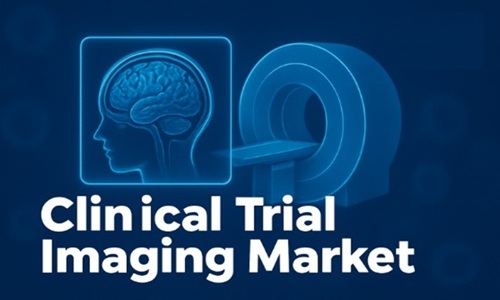
Trucking accidents are among the most devastating incidents on Nevada's roads, often resulting in catastrophic injuries, significant property damage, and complex legal implications. Las Vegas, a bustling city intersected by major highways like I-15 and US-95, sees its fair share of these unfortunate events. For residents involved in such accidents, navigating the aftermath can be overwhelming, especially when facing aggressive insurance companies and corporate trucking entities.
This is where specialized attorneys come into play. Las Vegas residents increasingly rely on legal professionals who focus exclusively on trucking accident cases to protect their rights, secure fair compensation, and navigate the intricate legal maze that follows a collision involving a commercial vehicle.
The Rising Threat of Trucking Accidents in Las Vegas
Understanding the Scale of the Problem
According to the Nevada Department of Transportation, the Las Vegas metropolitan area has witnessed a concerning uptick in trucking accidents over the last decade. The region's position as a logistics hub, combined with heavy tourist traffic and urban congestion, creates a perfect storm for these incidents.
Unlike standard car accidents, trucking accidents involve a distinct set of risks and liabilities. Commercial trucks, often weighing 20 to 30 times more than passenger vehicles, can cause life-altering injuries or fatalities even at relatively low speeds.
Common Causes of Trucking Accidents in Nevada
Several factors contribute to trucking accidents in Las Vegas, including:
Driver fatigue: Federal regulations limit hours of service, but violations remain prevalent.
Distracted driving: Cell phone use, GPS distractions, and other factors can impair truck drivers.
Improper cargo loading: Overloaded or imbalanced cargo increases the risk of rollovers and jackknife accidents.
Mechanical failures: Poor maintenance or defective parts can lead to brake failures, tire blowouts, and other dangerous malfunctions.
Speeding and aggressive driving: Truck drivers under pressure to meet tight deadlines may resort to reckless behavior on the road.
Unique Legal Challenges After a Truck Accident
Victims of truck accidents often face an uphill legal battle. The trucking industry is governed by both state and federal laws, including oversight from the Federal Motor Carrier Safety Administration (FMCSA). This dual-layered regulation adds complexity to any legal action following a crash.
Additionally, multiple parties may share liability, such as:
Truck drivers
Trucking companies
Cargo loaders
Vehicle manufacturers
Maintenance contractors
Determining fault and negotiating fair compensation in these multi-defendant cases requires a nuanced understanding of trucking law—something general personal injury attorneys may not possess.
Why Specialized Truck Accident Attorneys Are Crucial
Expertise in State and Federal Trucking Laws
Truck accident attorneys bring an in-depth knowledge of FMCSA regulations, Nevada trucking laws, and industry practices. This expertise enables them to:
Identify regulatory violations that contributed to the accident.
Obtain crucial evidence, including driver logs, maintenance records, and black box data.
Challenge trucking company tactics designed to minimize or deny liability.
By partnering with a specialized lawyer, victims gain an advocate who can navigate these complex issues efficiently and effectively.
Navigating the Insurance and Litigation Process
Insurance companies representing trucking corporations often employ aggressive strategies to protect their bottom line. These tactics may include:
Offering lowball settlements before victims understand the full extent of their injuries.
Attempting to shift blame onto the victim.
Delaying claims to pressure victims into settling.
Experienced truck accident attorneys anticipate these maneuvers and know how to counter them. Their familiarity with litigation tactics, coupled with negotiation skills honed specifically in trucking cases, ensures that victims receive the compensation they deserve for medical bills, lost wages, pain and suffering, and future care needs.
Investigative Resources and Expert Witness Access
Reconstructing a truck accident requires more than eyewitness statements. Specialized attorneys collaborate with accident reconstruction experts, medical professionals, vocational analysts, and other specialists to build a compelling case.
This thorough investigation process strengthens the victim's claim, often compelling insurance companies to settle fairly or risk an unfavorable verdict in court.
Tailored Legal Strategies
Each trucking accident is unique. A seasoned trucking accident lawyer tailors their legal approach based on the specifics of the crash, the parties involved, and the available evidence. This customized strategy ensures the highest chance of a favorable outcome.
How Las Vegas Victims Can Choose the Right Attorney
Researching Credentials and Experience
When seeking a truck accident attorney, Las Vegas residents should prioritize:
Proven experience in handling trucking cases.
A track record of verdicts and settlements in favor of truck accident victims.
Membership in professional legal organizations focused on personal injury or trucking litigation.
Resources like Super Lawyers provide vetted lists of highly rated attorneys who meet stringent professional standards.
Evaluating Client Testimonials and Case Results
Past clients' experiences can offer invaluable insights into an attorney's capabilities and client service approach. Prospective clients should look for testimonials that specifically mention trucking accident cases and positive outcomes.
Free Consultations and Contingency Fees
Most reputable truck accident lawyers offer free consultations and work on a contingency fee basis—meaning clients pay no fees unless the attorney secures compensation. This arrangement removes financial barriers for victims seeking justice.
The Impact of Legal Representation on Truck Accident Outcomes
Higher Settlements and Jury Awards
Data consistently shows that accident victims represented by experienced attorneys recover significantly more compensation than those who go it alone. This disparity is even more pronounced in trucking accident cases, where stakes are high, and insurers fight hard to protect their interests.
Protection Against Unfair Settlement Offers
Legal representation ensures victims do not fall prey to initial settlement offers that fail to account for the long-term consequences of their injuries. With an attorney's guidance, victims can assess the true value of their claim, including future medical expenses, rehabilitation costs, and reduced earning capacity.
Empowering Victims During a Difficult Time
Perhaps most importantly, having a dedicated truck accident attorney allows victims and their families to focus on healing while knowing their legal matters are in capable hands.
Conclusion: Advocacy Matters in the Aftermath of a Trucking Accident
In Las Vegas, where trucking accidents pose a serious threat to residents and visitors alike, turning to specialized legal professionals is not just a smart decision—it is often the difference between financial hardship and a secure future.
Victims who partner with a truck accident lawyer in Las Vegas can navigate the intricate legal process with confidence, knowing they have an advocate fighting for their best interests.
For those seeking additional information on trucking accident claims, the Forbes legal guide offers a comprehensive overview of what victims should expect when pursuing compensation after a collision involving a commercial vehicle.
By aligning with attorneys who possess specific expertise in trucking accidents, Las Vegas residents can safeguard their rights, maximize their compensation, and hold negligent parties accountable.

















